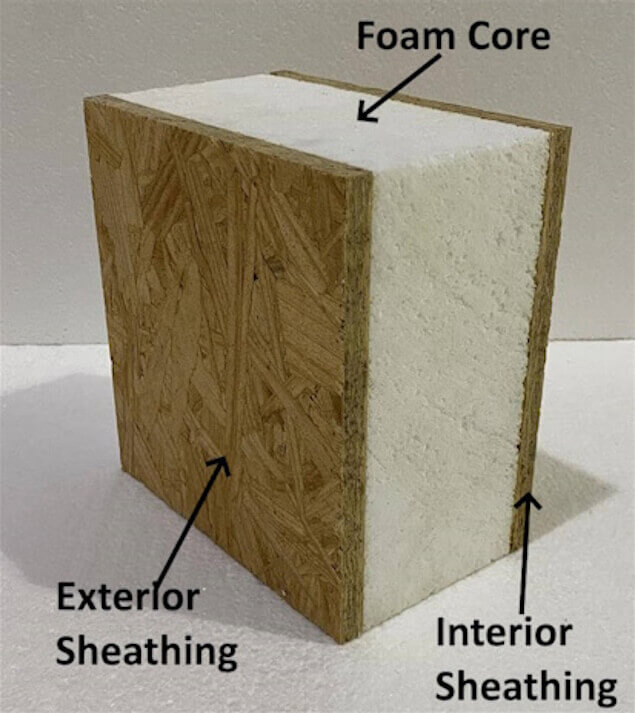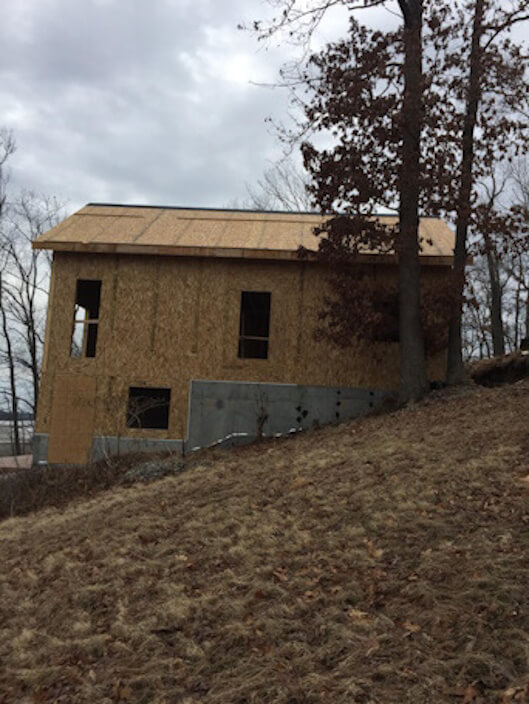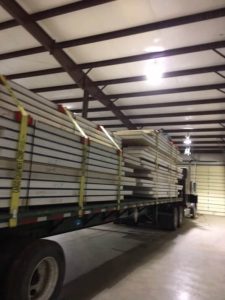STRUCTURAL INSULATED PANELS – PROVEN PERFORMANCE
ENERGY EFFICIENCY OF STRUCTURAL INSULATED PANELS:
Structural Insulated Panels (SIPs) are an excellent alternative to conventional building methods. SIPs panels create a very tight and energy efficient home. On the other hand, standard stick framing with fiberglass insulation has been proven to be much less energy efficient. SIPs panels have a nearly continuous foam core glued between two layers of Oriented Strand Board (OSB). This foam core greatly reduces the dead airspace in the home’s walls. However, this airspace is common in stick framed walls that use fiberglass insulation. As a result, the interior temperature and air quality is more easily controlled in a SIPs built home. Therefore, the homeowner can realize much lower monthly utility costs.
SIPs panels can be used as individual components of the home such as wall, floor, or roof panels. However, when these individual components are combined they make a total building system that is highly energy efficient. Click here to read more about the energy efficiency of structural insulated panels.




Structural insulated panel construction is not a new concept. The “Forest Products Lab” built the first in a series of experimental SIPs homes as early as 1935. Then in 1952, Alden P. Dow built SIPs homes in Midland, MI. SIPs homes have continued to increase in popularity over the years.
ADVANTAGES OF STRUCTURAL INSULATED PANELS:
Structural insulated panels have many advantages when compared to conventional stick framing. Energy efficiency is right at the top of the list. Additionally, speed of construction, lower labor costs, and a stronger and tighter building envelope are other advantages. Many of these advantages have a one time savings that are realized during the construction process. However, energy efficiency gives back over the life of the home in the form of lower monthly utility bills. Click here to read more about the advantages of SIPs construction compared to conventional methods.
Oriented Strand Board (OSB)?
The skins of structural insulated panels (SIPs) are typically Oriented Strand Board (OSB). OSB consists of layered mats of wood chips or fibers. Exterior layers are wood strands aligned in the long panel direction. Inner layers consist of cross or randomly aligned strands. OSB gets it’s strength from these alternating layers. OSB is recognized and approved by all major US code agencies through DOC PS2-92 Wood-Based Structural Use Panels.
